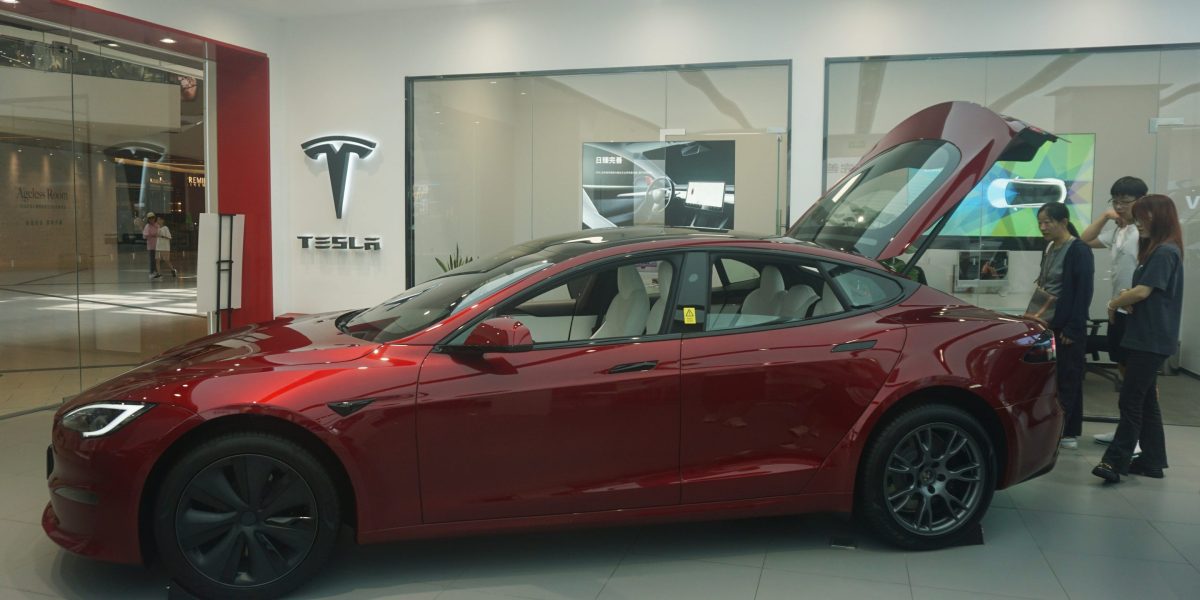Since early last year, the cars rolling off Tesla Inc.’s California assembly lines have been selling for steadily lower prices. This has had a happy knock-on effect on a car lot just across the freeway from the company’s San Francisco Bay area factory.
CarMax Inc.’s superstore in Fremont, California, has seen a stream of shoppers more willing than ever to kick the tires on an electric vehicle. While Tesla’s price cuts aren’t all that’s driving the foot traffic — the range of pre-owned plug-in models to choose from is steadily broadening — Elon Musk’s early dominance of the market for new EVs has translated to serious sway over used-car dynamics.
“We’ve seen a really good amount of interest,” Henry Melendez said in a phone interview. The CarMax general manager said customers have told him they wanted to seize on incentives and falling prices. “They’ve always wanted to get into an electric vehicle, but it just wasn’t quite as affordable.”
The trend taking place on Tesla’s doorstep in Fremont is playing out across much of the US. Retail sales of used EVs jumped 70% in the first half of the year, according to market researcher Cox Automotive. The average price of a used EV has fallen below $30,000, iSeeCars.com said in June, noting they’d become less costly than the typical gas-powered vehicle.
Affordability remains a major impediment to EVs catching on with a wider swath of US new-car buyers. But the momentum retailers are seeing for used vehicles serves as a positive sign that demand will pick up once they’re able to offer models that are more affordable.
“Tesla is driving the market by lowering the prices,” said Scott Shannon, a general sales manager at Axis Motorcars in Jersey City, New Jersey. The dealership has about 400 new and used cars in inventory, and just six EVs in stock, he said. “Used EVs are sold more quickly than gas cars, almost in a week.”
Not all dealers are having such luck. Part of what’s driving demand is ample supply — the inventory of used EVs is about four times as high now as it was in 2021 when Recurrent, a platform for buying and selling electric cars, started keeping track of the data.
Overall, it’s taking dealers longer to sell used EVs than internal combustion engine-powered cars, according to auto researcher Edmunds. Where that flips is for models priced between $20,000 and $30,000 — used EVs tend to be snapped up within 30 to 36 days, the market researcher’s data show, compared to 39 days for gas cars.
It helps that Uncle Sam is lending a hand. While clean vehicle tax credits worth as much $7,500 for buyers of new EVs has gotten the most attention since the 2022 passage of the Inflation Reduction Act, the law also created $4,000 credits toward the purchase of used plug-in models costing $25,000 or less. Whereas manufacturers have to meet strict criteria for their new EVs to quality for incentives, used electric cars qualify as long as they’re below that price threshold and at least roughly two years old.
Tesla’s reluctance to update its lineup is another reason why its second-hand EVs are looking relatively attractive, said Jessica Caldwell, Edmunds’ head of insights. The US manufacturer hasn’t substantially updated its four-year-old Model Y sport utility vehicle, and its refresh of the Model 3 didn’t drastically alter the look of the sedan introduced seven years ago.
Drivers can snap up a used Model 3 for $22,000 and “it doesn’t look that different than a new one,” Caldwell said. Most used EVs “are a good deal.”
